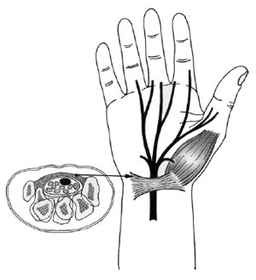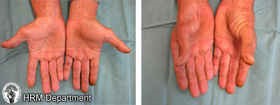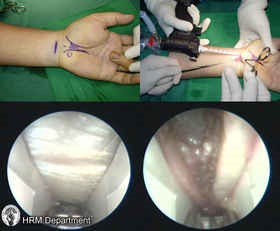There is a tunnel in the wrist called the carpal (wrist) tunnel. Nine tendons and the median nerve, pass through it. When pressure builds up in the tunnel, the nerve gets squeezed and is unable to function properly. This may result in numbness, discomfort and pain in the fingers.

Many factors contribute to the development of Carpal Tunnel Syndrome. Overuse of the wrist in activities can contribute to development of the condition.
This includes activities that involve:
- Repetitive wrist movements
- Prolonged awkward wrist positions
- Prolonged firm grip or pressure on the palm
- High speed or forceful finger movements (e.g. typing)


















